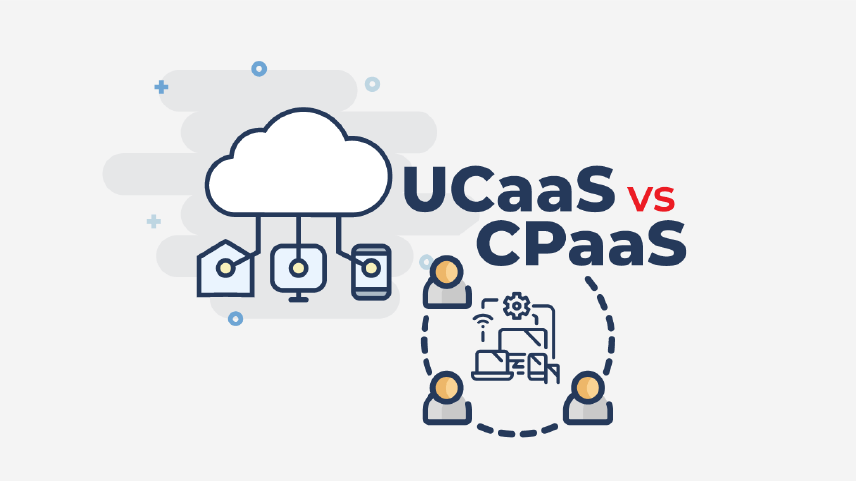UCaaS and CPaaS sound like two confusing acronyms, but these two terms aren't as scary as one might think. The business VoIP sector uses UCaaS and CPaaS, and both have benefits and drawbacks. Here's everything you wanted to know about UCaaS and CPaaS but were too afraid to ask.
What is UCaaS
- United Communications as a Service (UCaaS) is similar to Software as a Service (SaaS), a method of software delivery that lets business owners choose the tools and features they need, such as messaging and calling services.
- In a similar vein to SaaS, UCaaS lets businesses choose the Unified Communications (UC) software features that they want to incorporate into their company.
- This might include video conferencing, live chat, unified messaging, texting apps, and other VoIP services that will improve communications. This way, they don't have to pay for UC software with features that they will never use. As a result, they can streamline UC and save money.
- It's no wonder, then, that the UCaaS market experienced an annual growth rate of 29 percent between 2016-17, and experts predict this percentage will soar in the next few years.
- Also similar to SaaS, businesses will choose a pricing model that benefits them. This is usually a "pay-as-you-go" model, where the business owner will pay every month (or quarter) for UCaaS.
Unlike traditional UC platforms, though, businesses won't need to purchase the right hardware to power UCaaS. This can be expensive, especially if a business needs a data center or server rack. The provider hosts all of the hardware needed for this service, instead. Everything is accessible through the cloud, so nothing is on-premises, and several businesses will share data centers and server racks.
Follow Us On Linkedin
What is CPaaS
- Communications Platform as a Service (CPaaS) is similar to UCaaS, but there are noticeable differences. Business owners will subscribe to CPaaS, usually on a monthly basis, just like UCaaS. Business owners will access services via the cloud, just like UCaaS. Business owners will share data centers and server racks, just like UCaaS.
- The difference here is that business owners can create their own real-time communications platform, where they can communicate, live, with customers and clients around the world. They will receive Software Development Kits (SDKs) and communication APIs so they can build their own apps that power their business.Or use one of the pre-built APIs from their CPaaS provider if they don't want to start from scratch.
There are other differences too:
- CPaaS may require developer experience, while UCaaS is more "plug 'n' play" and requires little setup.
- People tend to use CPaaS for customer communications and UCaaS for internal communications.
- These are just some of the reasons why experts believe that CPaaS spend will grow from $2 billion in 2017 to a massive $10.9 billion by the year 2022.
UCaaS vs. CPaaS: Which One is Best
- It's all a matter of choice. Businesses who have no interest in building their own APIs and apps should stick with UCaaS. It's generally less complicated, and they can still customize a VoIP software solution that incorporates features like unified messaging, text apps to reduce messaging costs, and live chat. For those who want a truly customized, personalized solution, however, CPaaS is the way to go.
- It's worth noting, however, that UCaaS and CPaaS can compliment each other. Incorporating both of these software delivery methods into a business can revolutionize communications and make it easier to engage with customers and clients.
If a company wants a solution for both internal and outbound customer communications, for example, they can reap the benefits of UCaaS and CPaaS. Another company might want a customized, personalized solution to facilitate some business functions (CPaaS) and a less-complicated, "plug 'n' play" experience for other functions (UCaaS). Combining both of these technologies will help them reach more customers, automate business tasks, and grow their company.
Read Now: APIs 101: SMS API
.png)

